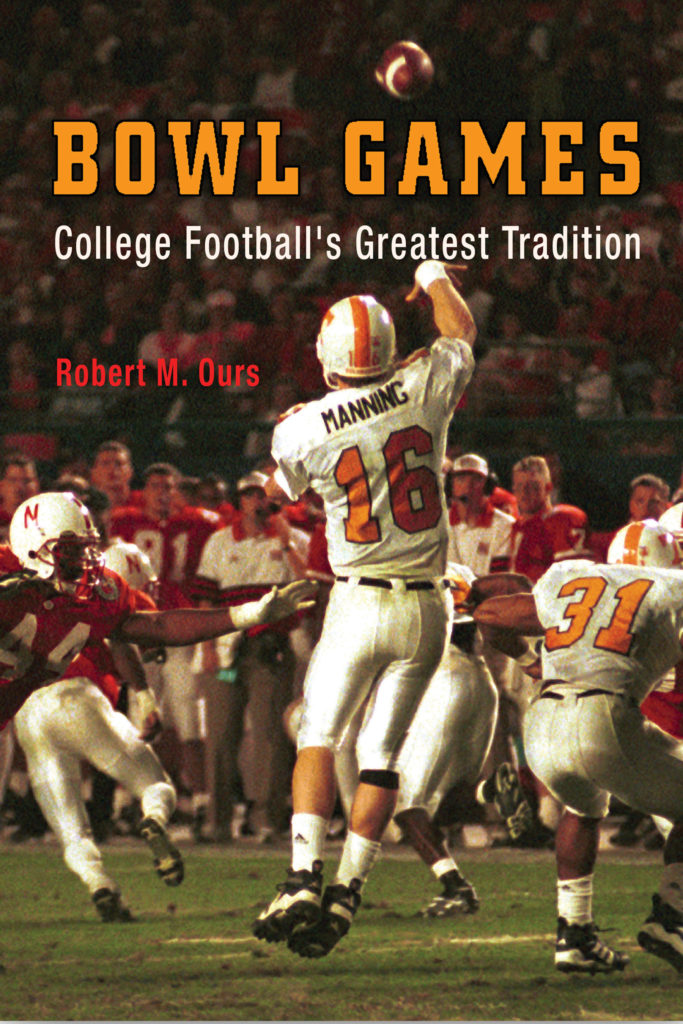

Bowl Games
College Football's Greatest Tradition
by Robert Ours
$24.95 Add to Cart Save 25% on every book by joining our Book Club


by Robert Ours
More than a century ago, Michigan and Stanford played a football game to top off the annual Tournament of Roses New Year’s celebration in Pasadena, California. Little did those dusty players know that this first postseason college football game would eventually lead to one of the most watched and anticipated series of sporting events in the country, competitions that would generate millions of dollars and be used to decide the national champion.
In Bowl Games: College Football’s Greatest Tradition, historian Robert M. Ours shows how these games established college football as a national sport. Bowl games were also used as charity events and morale boosters during the Great Depression and both world wars, and were among the first public forums that challenged segregation in the South. In addition, Ours traces the steady march toward using bowls to determine a national championship as well as the increase in payouts. Throughout, amazing athletes and teams appear, some well-known, others forgotten. The gridiron exploits of Kentucky’s tiny Centre College in the early 1920s and the great Hardin-Simmons squads of the 1930s and 1940s are featured along with top performances from future professional stars, such as Don Hutson, Jim Brown, and Tom Brady. Some of the greatest matchups in the history of football occured at bowls, including Alabama’s near upset of heavily favored Duke in the 1945 Sugar Bowl and Ohio State’s double-overtime victory against Miami in the 2003 Fiesta Bowl. The book includes period photographs, year-by-year bowl game summaries, and a complete list of every major NCAA-sanctioned bowl played to date.
Whether or not a playoff system in Division I-A college football emerges, and no matter what format bowl contests take, there will always be dramatic matchups, superlative individual performances, and enduring memories of college football’s postseason play.
Robert M. Ours (1936–2014) was Professor Emeritus of Journalism at West Virginia University. He began writing about college football in 1954 and later covered the sport for The Associated Press. He served as a historian for the Virginia State Library and the Virginia Independence Bicentennial Commission and taught journalism at West Virginia University from 1972 through 1996. Ours is the author of a number of articles and books, including the College Football Encyclopedia (4th Edition, 2002) and the College Football Almanac.
“The first work to focus solely and comprehensively on the history of bowl games.”—Choice
“Of great interest to true enthusiasts.”—Publishers Weekly